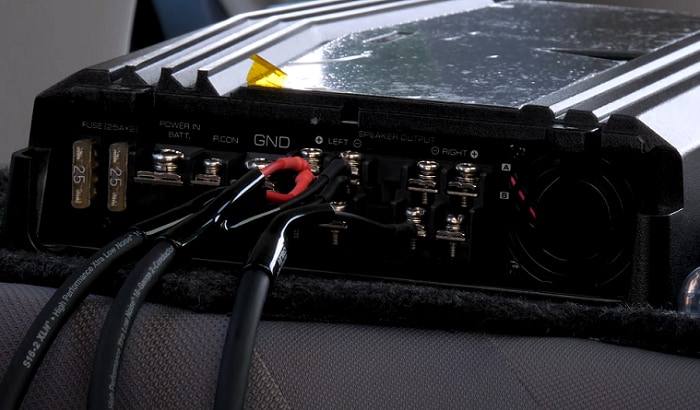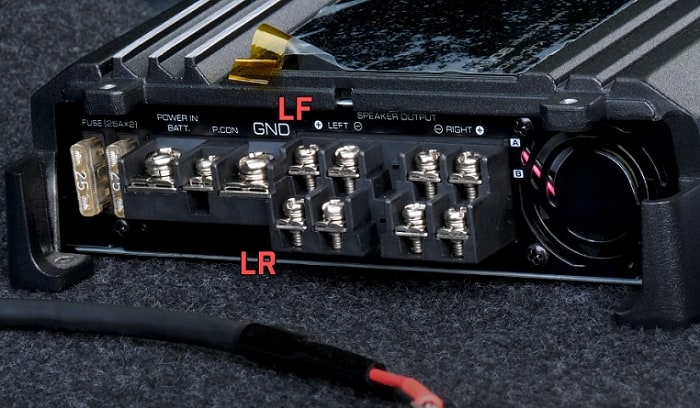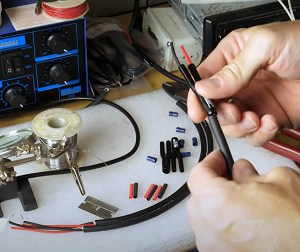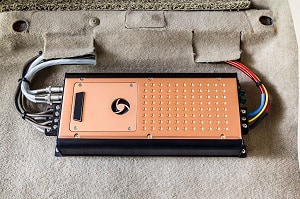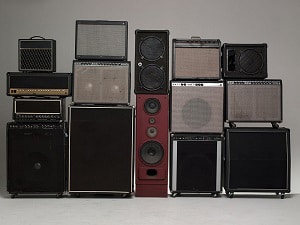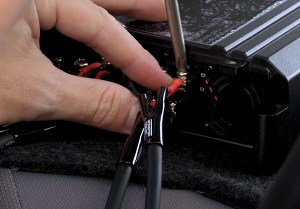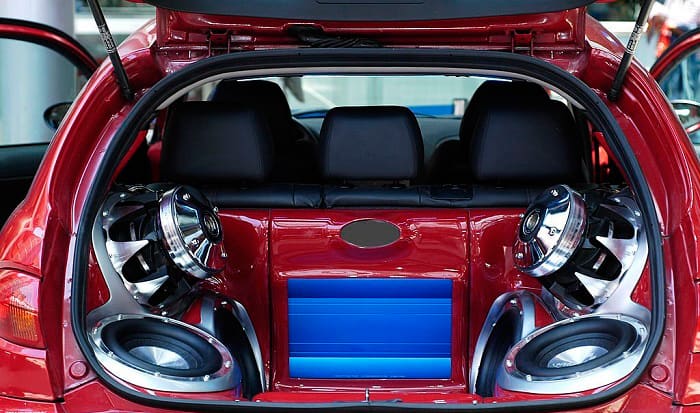There are multiple ways to maximize the potential of amplifiers and speakers in your sound system.
One usual method is to connect 4 channel amp to components in varying configurations and arrangements. While it is not the usual and intended use for a 4 channel amplifier, one specific arrangement is using a 4 channel amp subwoofer alongside 4 speakers in total.
Regardless if you have the most modern amplifiers or one of the ‘old school types you want to use, here are the most common system setups on how to wire a 4 channel amp to 4 speakers and a sub.
Table of Contents
Step-by-step to Wire a 4 Channel Amp to 4 Speakers and a Sub
Similar to preparing a bridged 4 channel amp, wiring a 4 channel amplifier is not as complicated as it seems to be – regardless how intimidating a 4 channel amp wiring diagram may look and sound like.
As long as you have a basic understanding of the terms, configurations, and conditions that you will encounter, it is possible to do it by yourself.
What to prepare (depends on the wiring system used):
- 4 channel Amplifier
- Speakers and subwoofer
- Amp Wiring Kit
- Wire Stripper
- Resistor (depending on the setup)
Step 1: Check if your Speakers and Amplifier are compatible
To ensure safety, check for your amplifier’s Minimum Impedance Rating. Make sure that the amplifier can support the load of the speaker.
MIR refers to the amount of resistance the amplifier has against the electric current. Less impedance means less resistance, thus more current will flow through the device.
As a general rule, never connect an amplifier to a speaker load that’s lower than the amp’s rating. An amplifier with 4 ohms per channel will not be able to handle a speaker load of 2 ohms; but it can support a load of 8 ohms or higher.
Step 2: Check which of the wiring systems will fit your components
As mentioned, there are multitudes of configurations and setups that can be used. Discussed in detail are the 3 basic types of systems for four channel amplifiers.
SYSTEM 1
This system makes use of the 4 channel amplifier rated for 2-ohms stereo and 4-ohms bridged and employs parallel connection:
- Connect the positive leads of two speakers to the positive terminal of the left channel. In the same way, connect the negative leads of the same two speakers to the negative terminal of the same channel.
- Repeat the previous step for the right channel. By now, there should be a total of 4 speakers connected to the front channels (2 each for the left and right).
- Bridge the subwoofer using the rear channels. Check your amplifier’s bridged wiring instructions.
But most of the time, the negative lead is connected to the negative terminal of the right channel, while the positive lead is wired on the left channel’s positive terminal.
It is important to take note that subwoofers require more power to maximize their potential. Thus why it consumes the rear channel in a bridged configuration.
SYSTEM 2
Although this is less common, when your amplifier supports 2 ohms stereo and 2-ohms bridged, system 2 is recommended as it provides more options for the rear channels:
- Similar to system 1’s front channel, both left and right channels can accommodate 2 speakers each. A total of 4 speakers can be connected to the 4 channel amp with sub.
- For the rear channel, several options are possible: You can connect a single sub wiring to 4 channel amp or use 2 subwoofers – since it is rated at 2 ohms when bridged.
SYSTEM 3
For ‘old school’ amplifiers that only support a load of 4 ohms or higher, this 3rd system is the best technique to employ. Although a little more complicated compared to systems 1 and 2, you can still learn and do it by yourself.
This system requires the installation of additional power resistors to ensure the total speaker load is at safe levels. Listed are a few considerations needed to be taken account when using 4 ohm rated amplifiers:
- In parallel connections, the speaker ohm values are divided into the number of speakers connected in a channel, that is, 4 ohms/2 speakers = 2 ohms seen by the amp. Since the amplifier is rated at 4 ohms, it cannot support the 2 ohms speaker load.
- A 4 ohm power resistor should be installed in each of the speaker’s positive wiring. This will bring the load to 8 ohms/2 speakers = 4 ohms seen by the amp.
- As for the subwoofer, it will be bridged to the rear channels, similar to system 1.
Step 3: Check if the system is functioning well
Whichever system you have installed, you can now test if the setup will work. Make sure all the things to consider are double checked to avoid damages or any problems.
FAQs
Should I wire a 4 channel amp to 4 speakers and a sub?
Before trying to hook up a 4 channel amp to front and rear speakers and to a subwoofer, several considerations should be kept in mind. Weigh the pros and cons before doing this technique.
Some of the pros would be improved sound without the extra costs, better bass experience given the addition of a sub, and more flexibility in the overall performance.
But in turn, the downside would be less room for peripherals such as a front-rear fader, as well as risk of damages when specifications of the devices are not compatible with each other.
Will I need a crossover when wiring a 4 channel amp to 4 speakers and a sub?
It’s recommended to take advantage of optional crossovers included in most modern amplifiers since they improve sound quality and system efficiency.
The built-in crossovers of full-range speakers, even with the addition of an amplifier, are already sufficient to send specific frequencies to the correct speakers.
But adding a subwoofer and more amplifiers to your sound system may require you to invest in one or more crossovers to minimize distortion and effectively filter out unwanted frequencies.
Can I connect 4 speakers and my subwoofer to a 2 channel amplifier?
No, you cannot connect 4 speakers plus a sub to a 2 channel amp. This is simply because there would be no other configuration that would accommodate all devices using 2 channels only.
However, only the 4 speakers can be connected to a 2 channel amp. The process is almost the same with system 1 wirings discussed in this article, but without the single sub wiring to 4 channel amp since there would be no room for it.
Connecting 4 speakers to a 2 channel amp can be done with either series or parallel wirings. Just be mindful of the load and impedance rating of your devices.
How many speakers can you run on a 4 channel amp?
8 speakers maximum can run on a 4 channel amplifier. As long as it is wired correctly, any type of amplifier can produce twice as much power; be it a 2, 3, or even 5 channel amp.
The most important consideration would be the amplifier’s specs. Ensure that it is 2 ohms stable. If not, you are advised to stick to 1 speaker per channel to avoid unintended damage to your devices.
Using parallel connection, one channel can support two speakers at most. Trying to connect any additional speakers can cause permanent damage to both amplifier and speaker.
Conclusion
You can basically use any type of amplifier for 4 speakers; even 2 channel amps can run these just fine. But in this article, we have discussed a relatively unusual method of utilizing a 4 channel amp to its full potential.
Although not the conventional method, you have seen that connecting 4 speakers 1 sub 4 channel amp together is possible. It provides an easy, DIY setup for your car audio or home theater sound system.
Depending on your available components and equipment at home, take note of the steps and basic systems on how to wire a 4 channel amp to 4 speakers and a sub. Surely, applying these to your current sound system will drastically amplify your experience and enjoyment.

Sam Stephenson is a writer who grew up in Washington, North Carolina. He was 2010 and 2015 ASCAP Deems Taylor / Virgil Thomson Prize winner and a 2019-2020 Guggenheim Fellow in General Nonfiction. His books have been published by W.W. Norton, Alfred A. Knopf, and Farrar, Straus and Giroux
